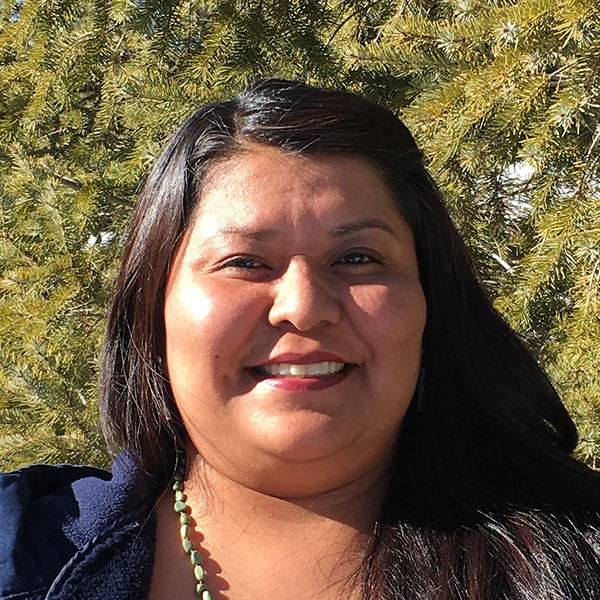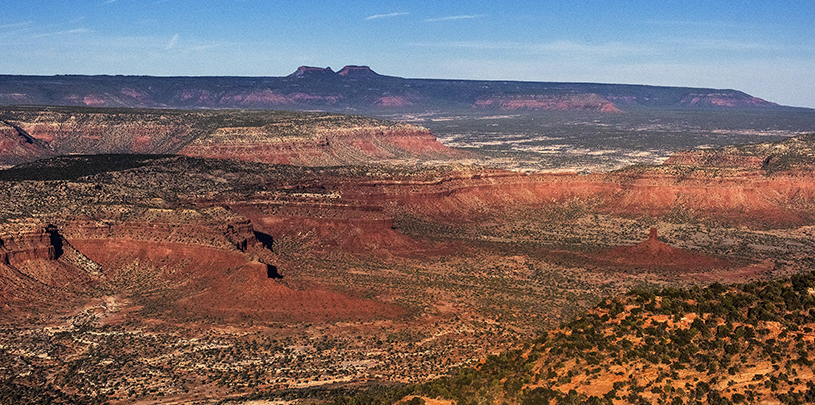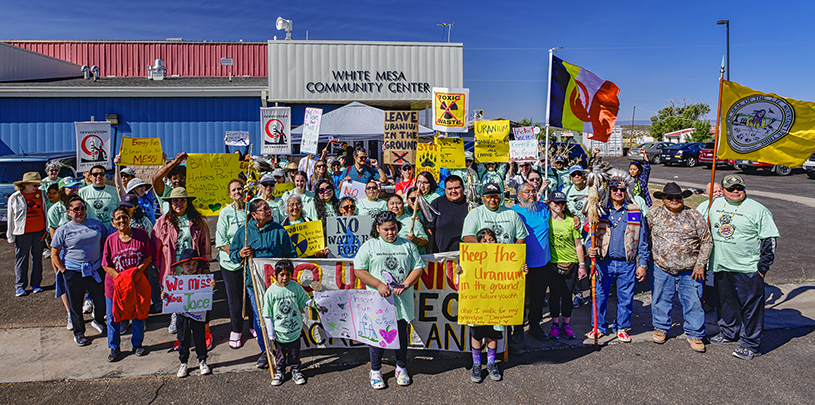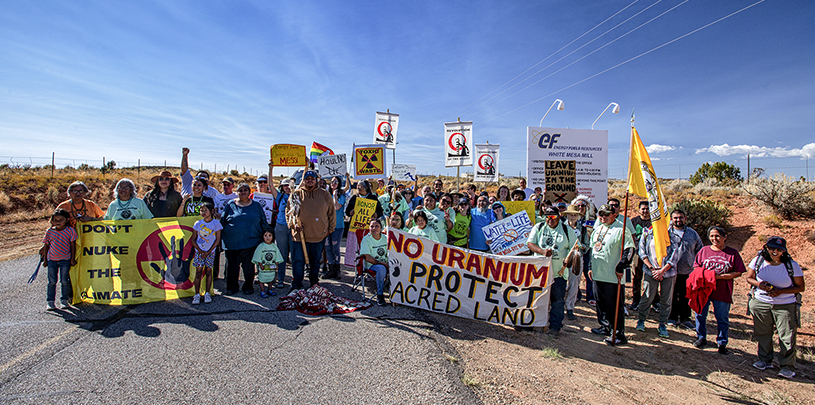
On a windy morning in southern Utah, members of the Ute Mountain Ute Tribe assembled in a parking lot in the reservation community of White Mesa, east of Bears Ears National Monument. In this quiet, high desert hamlet of about 300, elders arrived in traditional skirts and beadwork, teenagers rolled up on skateboards, children carried stuffed animals, and adults checked their cell phones. A young man unfurled a long canvas banner that flapped in the wind, painted with the words “No Uranium Protect Sacred Land” and the paw print of a bear.
It was the third Saturday in May in White Mesa, Utah, and tribal members were there to participate in the annual protest and spiritual walk to the town’s nearest neighbor: the White Mesa Mill, the last operating conventional uranium mill in America.
Living next-door to the last operating conventional uranium mill in America
The uranium mill has made headlines in recent years after it was revealed that its owner, Energy Fuels Resources, lobbied to reduce the size of Bears Ears National Monument. At one point, the company held dozens of mining claims inside the monument’s original boundaries. It also owns the Daneros uranium mine west of Bears Ears, as well as mines and claims around the Grand Canyon.
White Mesa community members are especially worried that pollution from the mill may contaminate the air they breathe and the water they drink.
“When the stacks are going, we can smell the sulfur down here,” community member Michael Badback told the crowd, which included advocates from other tribal communities and environmental groups across the Southwest and a handful of reporters.
“[S]ome days when the wind blows, when you come out, a lot of these kids like my grandson, they start to cough, and they never used to cough,” Badback explained, going on to share why protecting White Mesa matters. “We don’t have very much here,” he said, “but it is our beautiful reservation. We love where we’re at.”
The White Mesa uranium mill once processed uranium ore from mines across the Colorado Plateau, but now, with uranium prices low, it has stayed in business by processing vanadium from its waste ponds and from accepting and processing waste from toxic and radioactive sites across the country.
These wastes are accepted by the mill (sometimes, perhaps often, for a fee), the mill extracts leftover uranium, and then dumps whatever is left into giant ponds outside. There have been documented spills from trucks hauling these materials to the mill, something that also concerns community members.
What if toxic and radioactive waste spills?
“A lot of our people that don’t have vehicles, they hitchhike up the road and walk up the road to Blanding to buy stuff, and when trucks go by or if something happens, they’re going to be right on the side of the road when anything occurs. That’s very dangerous for our people,” Badback explained.
The ponds that hold the mill’s waste are lined, but the liners are decades old and have been in use much longer than they were designed for. There are documented plumes of contamination in the shallow aquifer beneath the mill, which sits above the tribe’s groundwater aquifer, although there is disagreement about whether the waste ponds are the source of this contamination. Regardless, community members worry about their water.

“The reason why it’s bothering me is that we’ve got well water,” said Ute Mountain Ute tribal elder and famed basketmaker Thelma Whiskers, a founding member of the local White Mesa Concerned Community group. “The community members, they don’t drink the water. They always buy water. And they ask me: ‘do you drink the water?’” She doesn’t.
The only place to buy bottled water in White Mesa is the local gas station, where a gallon will set you back $1.79.
“I care for my kids and my grandkids,” Whiskers explained. “That’s the reason why I’m standing here.”
With that, community members and their supporters set out for the mill, walking the five miles along the shoulder of Highway 191, southeastern Utah’s main thoroughfare, the road toxic and radioactive waste travels to the uranium mill along with tourists shuttling between Monument Valley and Canyonlands.

“It’s really hard to do something like this in a small community, to stand up for what you think‘s right for your community,” said White Mesa Concerned Community organizer Yolanda Badback, once the group stood before the mill’s sign, the closest the public is allowed to go to the mill. A sulfurous smell tinged the air, bringing a metallic taste to the mouth. “I don’t know if you guys smelled that, when you walked up,” Badback told supporters. “That’s what we smell every evening in our community. And it’s an awful smell, and it’s hard to deal with.”
The uranium mill has recently applied for permission to expand its waste pits and the mill’s owner has asked for trade protections on uranium hoping to artificially inflate demand, and prices, for uranium mined in the United States. A decision is expected from President Trump by mid-July 2019.
Despite these hurdles, concerned citizens in White Mesa continue to demand clear air and water for their community. “Myself, I’ve been threatened in Blanding, in the grocery store, but I don’t let that get to me,” says Yolanda Badback. “I stand up for who I am and what I’m doing for my people.”
For its part, the Grand Canyon Trust is working to ensure that the mill operates safely and follows the law, challenging the Daneros Mine expansion, and carefully tracking efforts to prop up the domestic uranium industry.





